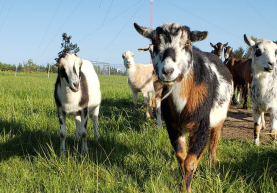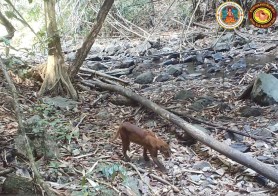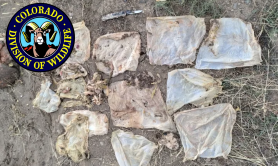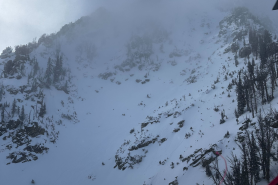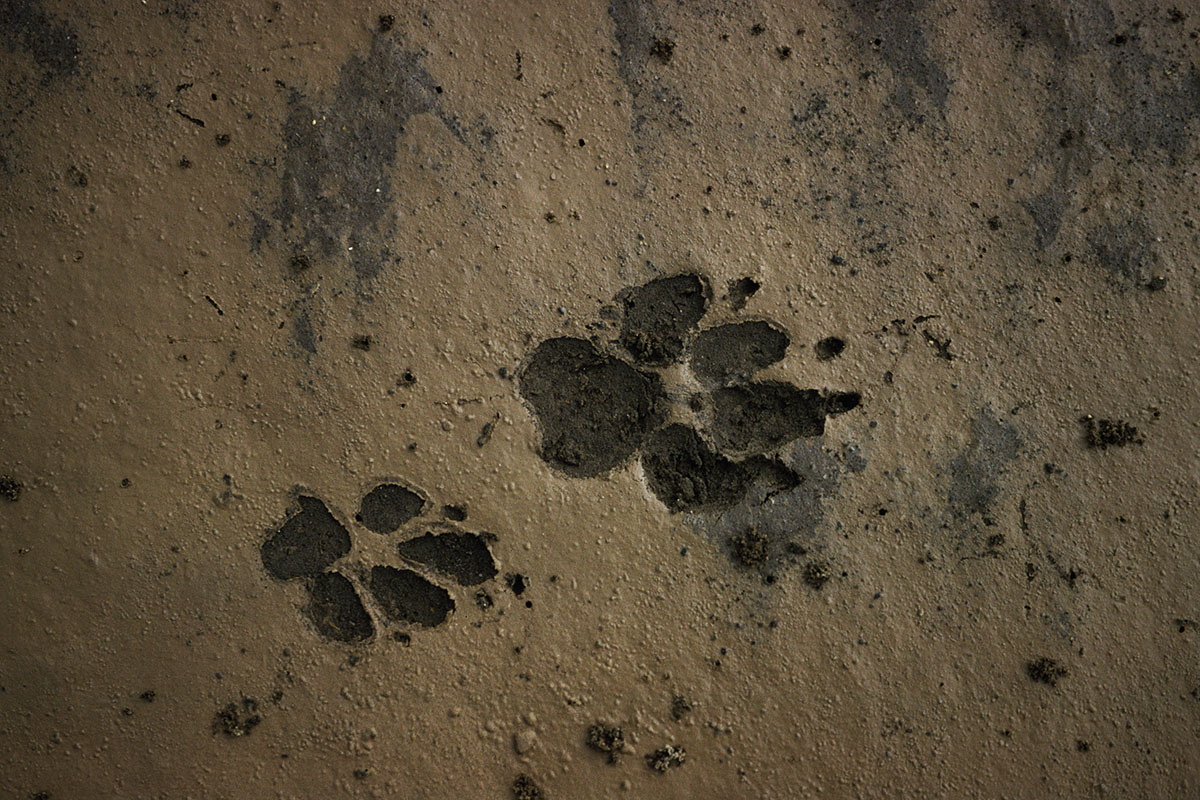

Have you ever come across animal tracks and wondered what came before you? Watching for wildlife—and signs of wildlife—is a fun part of many outdoor adventures. And you don’t have to be a zoologist or a master wilderness tracker to differentiate between different types of animal tracks, if you know the basics.
Videos by Outdoors with Bear Grylls
Here are our top-five tips for identifying animal tracks in the wild. (Read to the end for examples of mammal tracks you might find in North America.)
1. Consider Location and Habitat

First things first: Where are you? Common sense dictates that if you’re in the forest, the animal tracks you see are going to belong to some sort of woodland creature and not, say, a desert-dwelling one. You can narrow down the choices significantly according to your location and the habitat that surrounds you.
If you plan to look for signs of wildlife while you’re exploring outdoors, it’d be worth doing some research before your trip to learn about native species. This will give you a leg up on identifying tracks you come across while you’re outside cell range.
2. Scrutinize Size and Shape
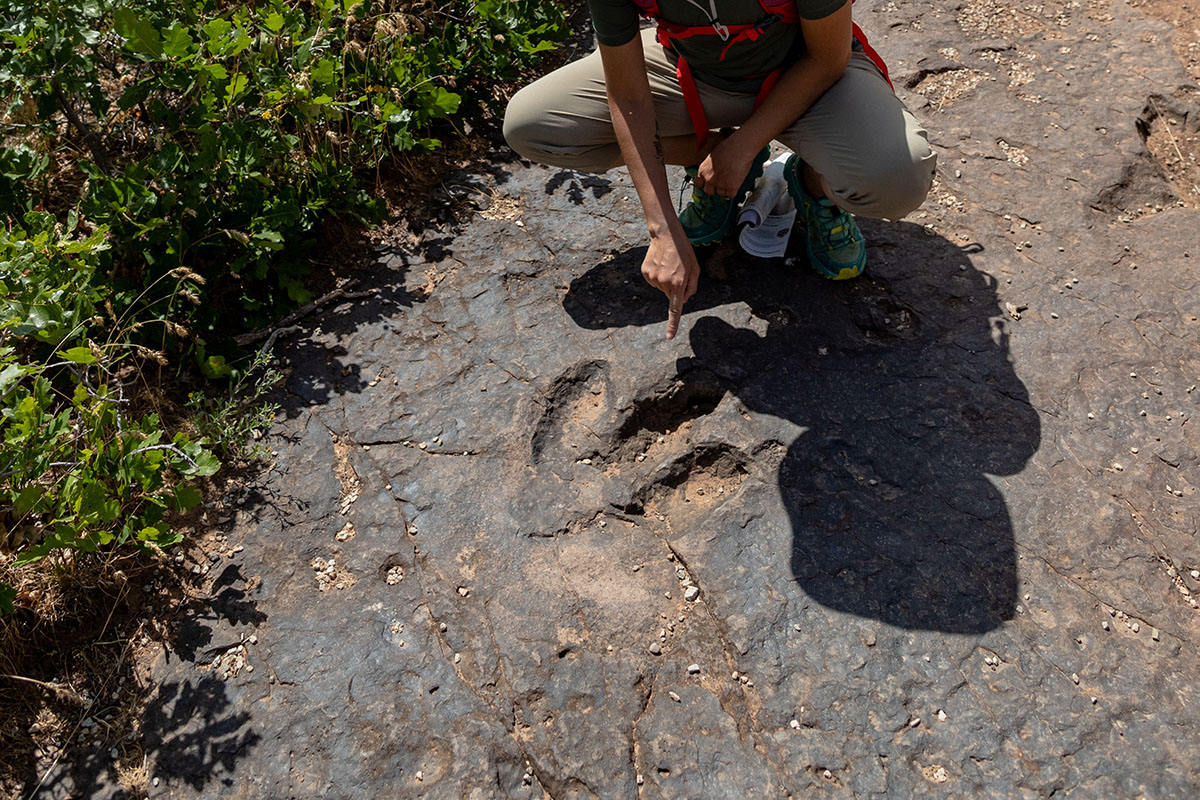
An important part of identifying animal tracks is scrutinizing their size and shape. You can use an object you have with you to take approximate measurements of the tracks’ length and width, then make a mental note or record this data for later.
The shape of a track may be all you need to identify it, since it often reveals the shape of the animal’s foot. If you can find a well-preserved track, you can further narrow your choices by observing whether a track was made by an animal with paws, hooves, or something else.
3. Count Toes and Look for Claws

Next, count the number of toes visible in the animal tracks and look for claw marks. If you can discern how many toes the animal has, that’ll tell you a lot. You can also observe how the toes are arranged. Some animals have toes that are close together and arranged symmetrically, like canine and feline species. Other animals have splayed-out toes, sometimes even pointing in different directions (e.g., birds) and/or asymmetrically arranged toes, like a deer’s hooves.
The presence or absence of claws is also telling. A canine like a wolf, dog, or coyote should have visible claw marks. A feline like a mountain lion or bobcat may not show claw marks, because their claws are retractable.
4. Pay Attention to Gait and Stride
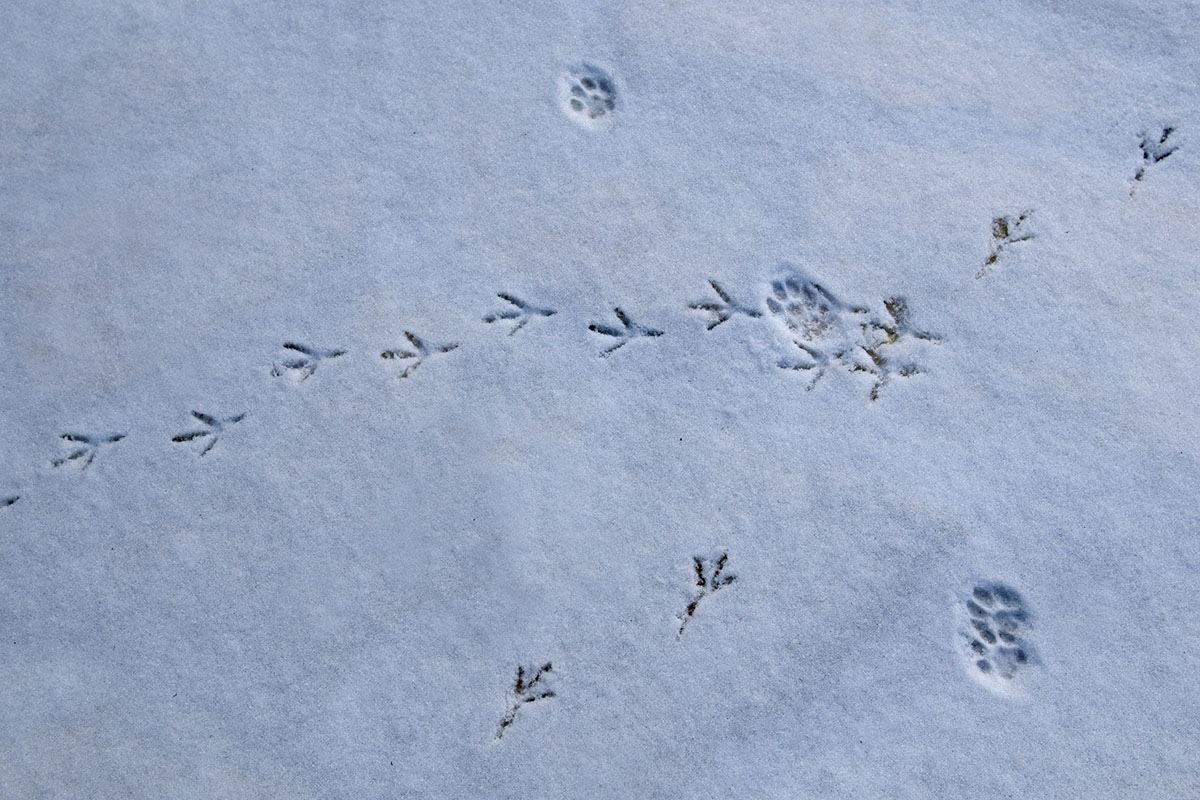
If you’re still not sure what made the footprints, consider how far apart the tracks are for some additional clues. By paying attention to the stride, you can get a sense of how long the animal’s legs are and/or how fast it was moving when it made the tracks.
You can also analyze the pattern you see reflected in the tracks. Does the animal move in a straight line, or does it appear to zig-zag or hop?
5. Analyze Track Depth
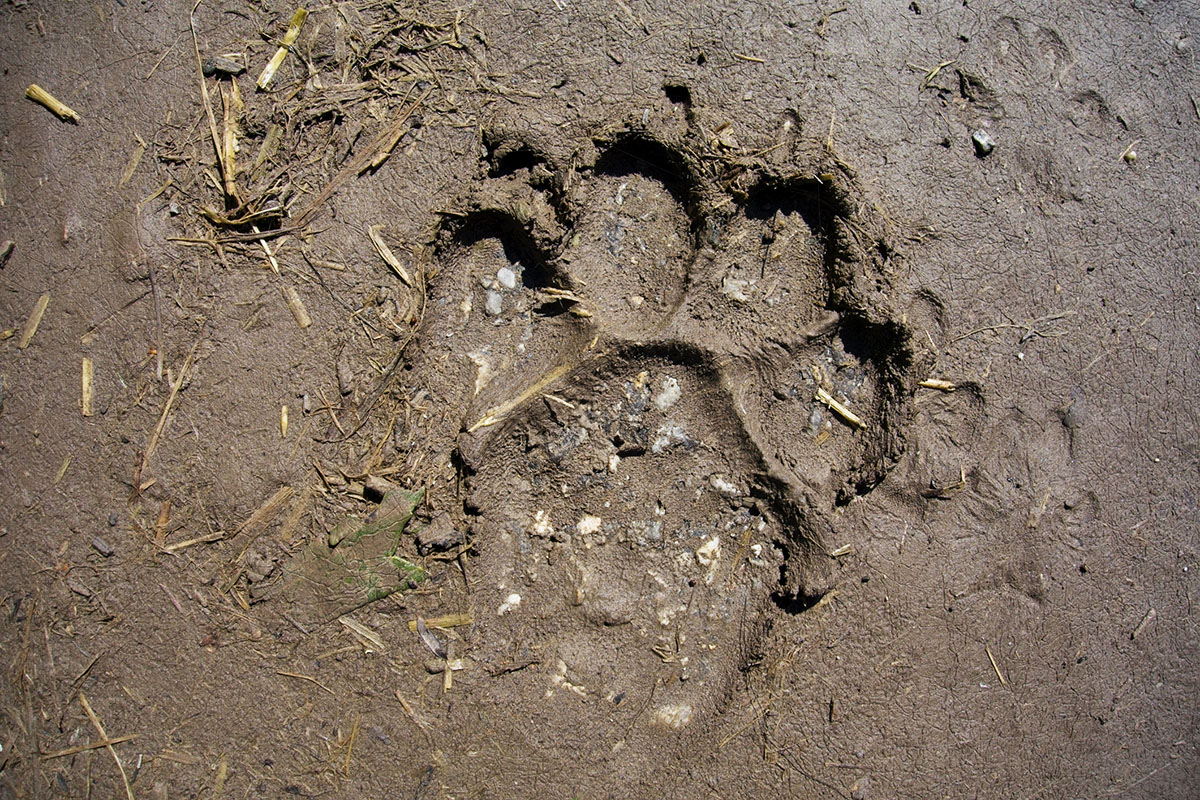
More helpful information to consider when you’re trying to identify animal tracks is the depth of the tracks. In general, heavier animals will leave deeper impressions than lightweight ones will, but the depth of a track will also depend on how soft the ground is, so consider the substrate when assessing this.
Other Signs to Watch for
Tracks are just one part of a bigger picture. Look for other signs of wildlife, like droppings, fur or feathers, claw marks, and broken or chewed vegetation to help you figure out what animals you’re sharing a space with while you’re outdoors.
If you can’t identify the animal tracks in the moment, take a photo and record your data to look it up later when you have service and downtime.
Examples of North American Mammal Tracks
Black bear

Brown bear

Coyote
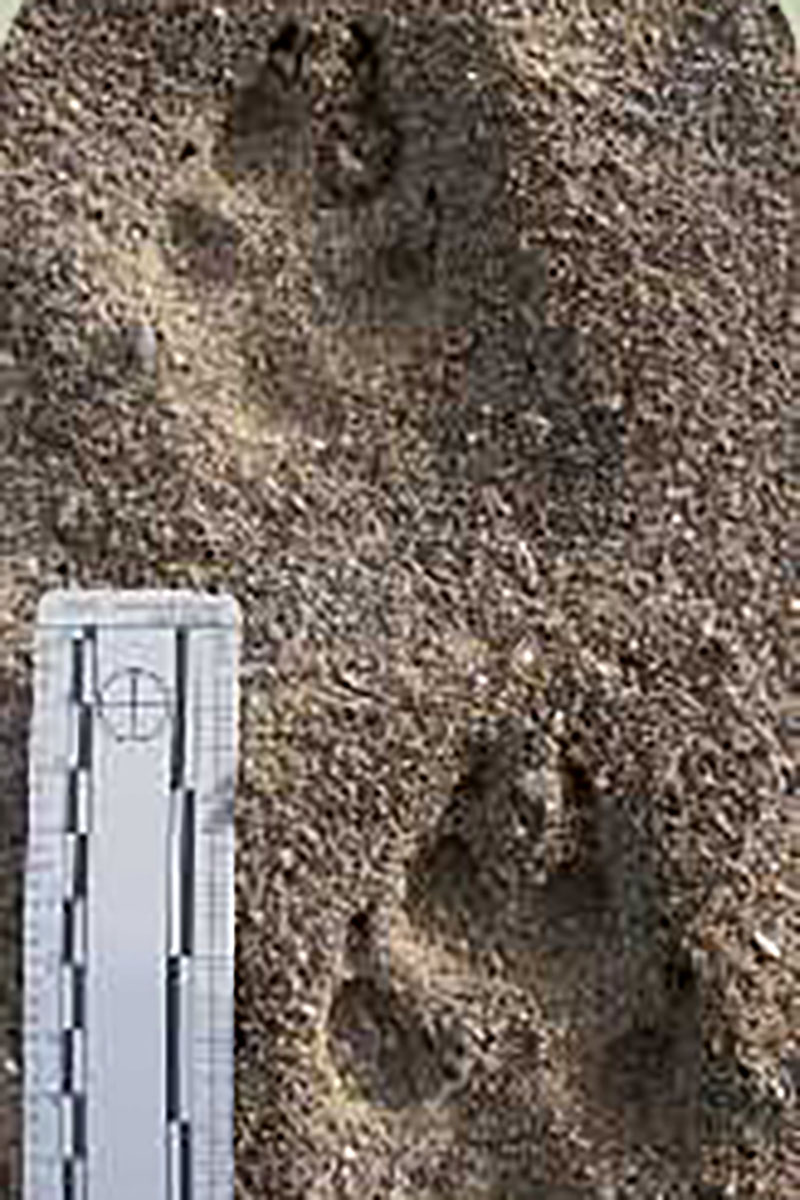
Deer
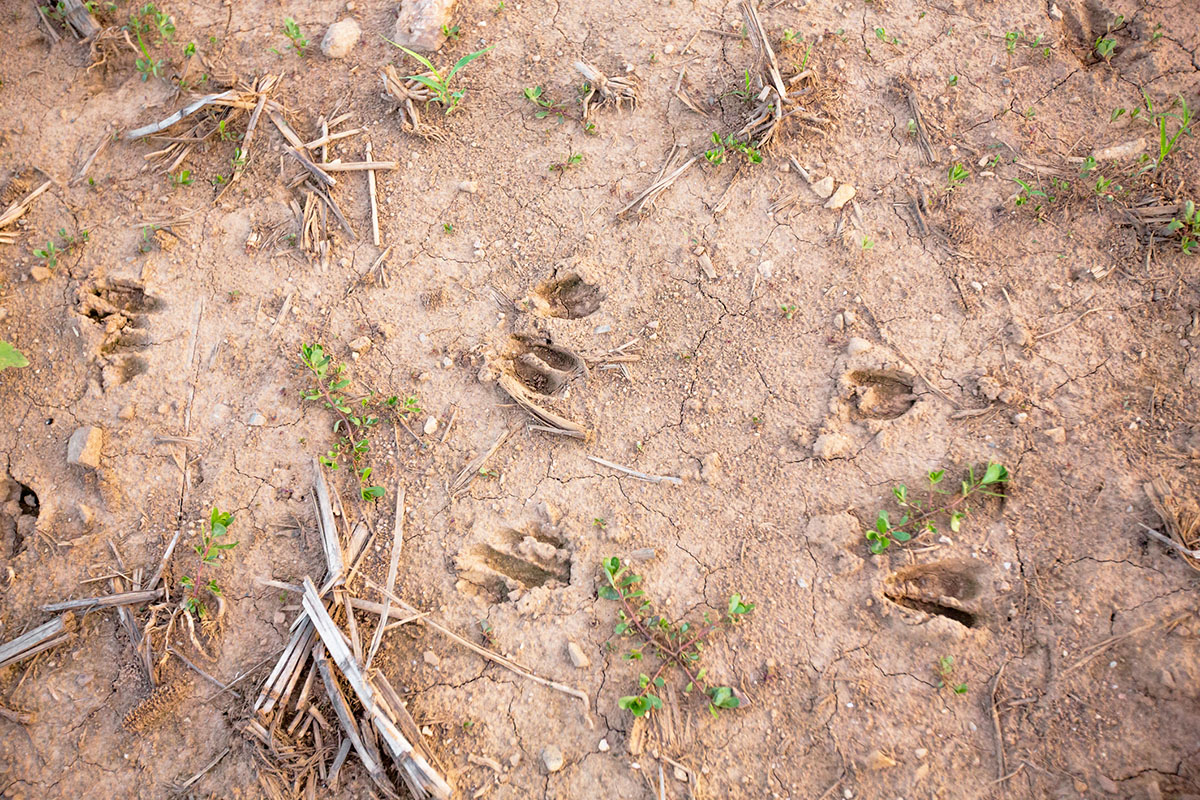
Fox
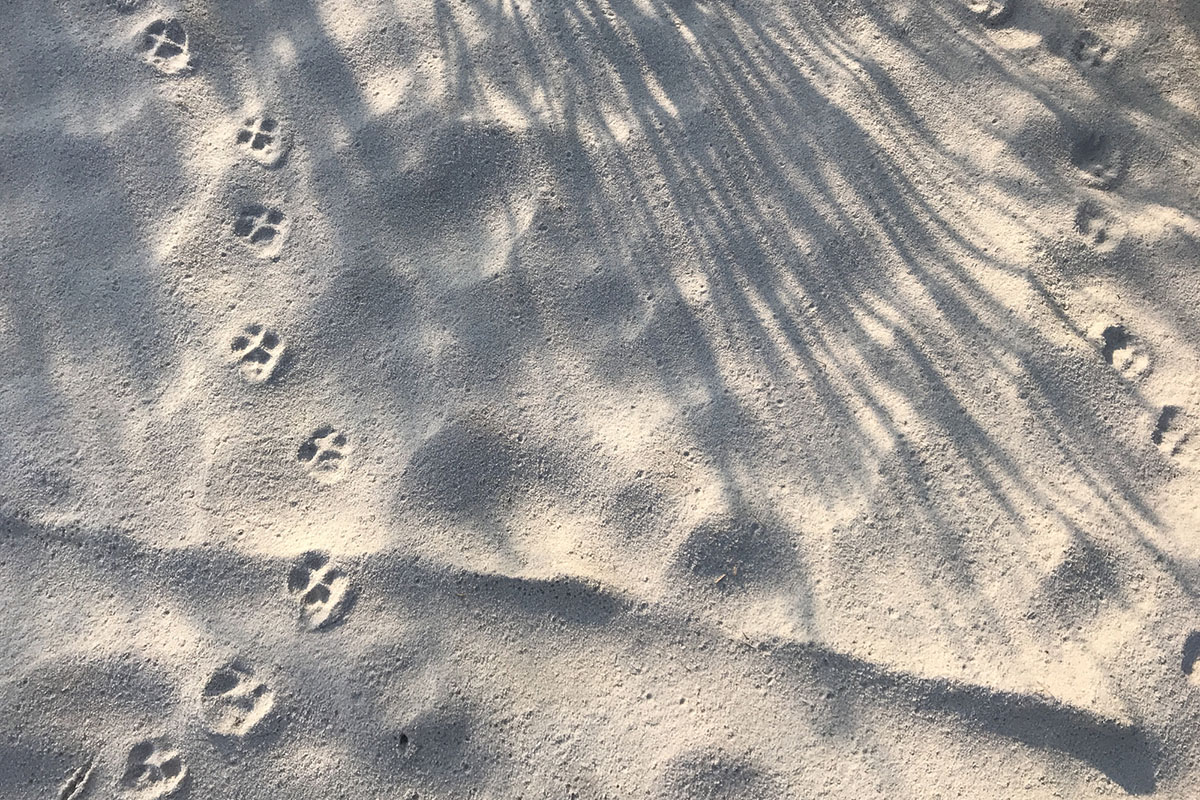
Mountain lion
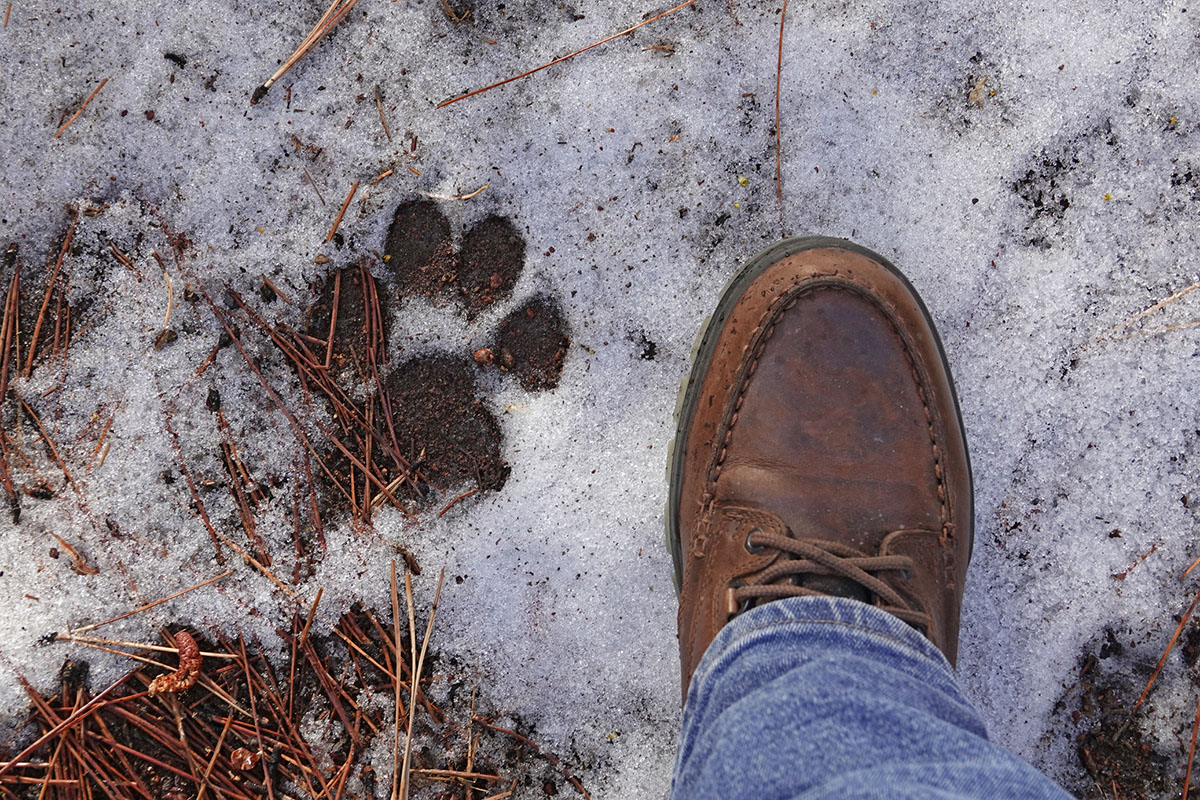
Racoon
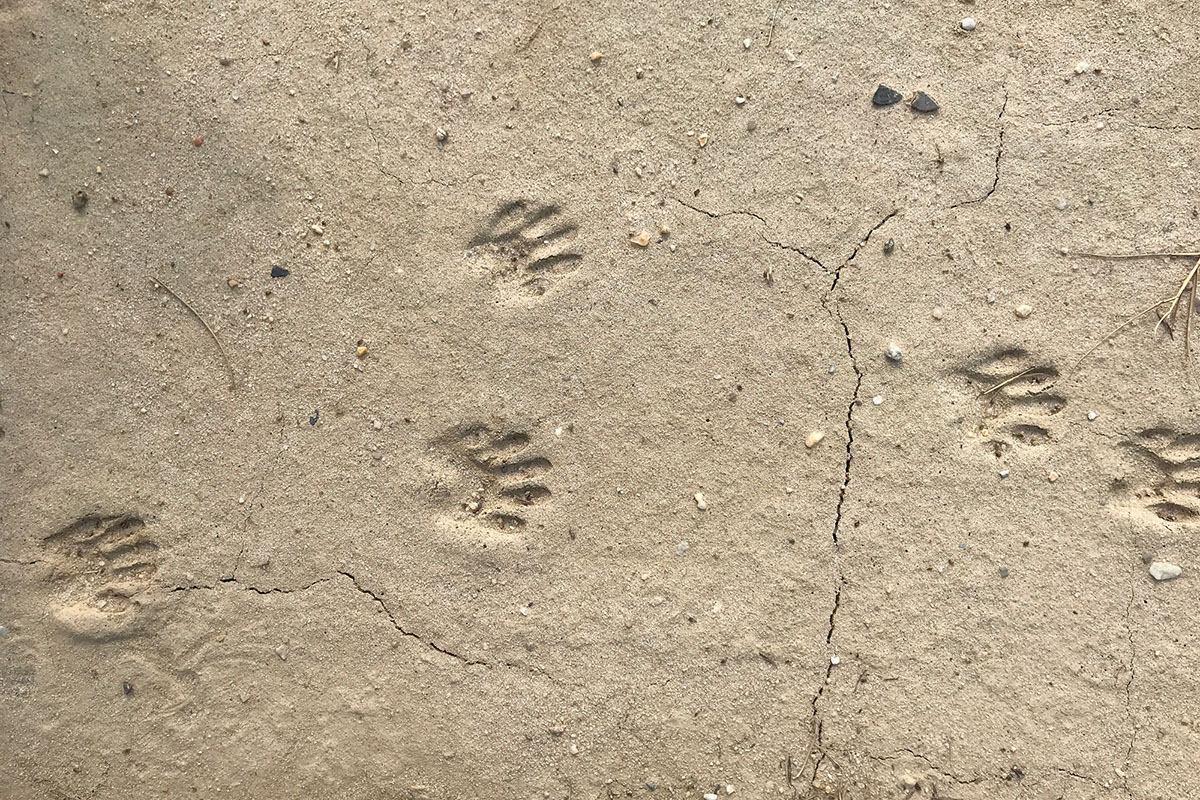
Squirrel
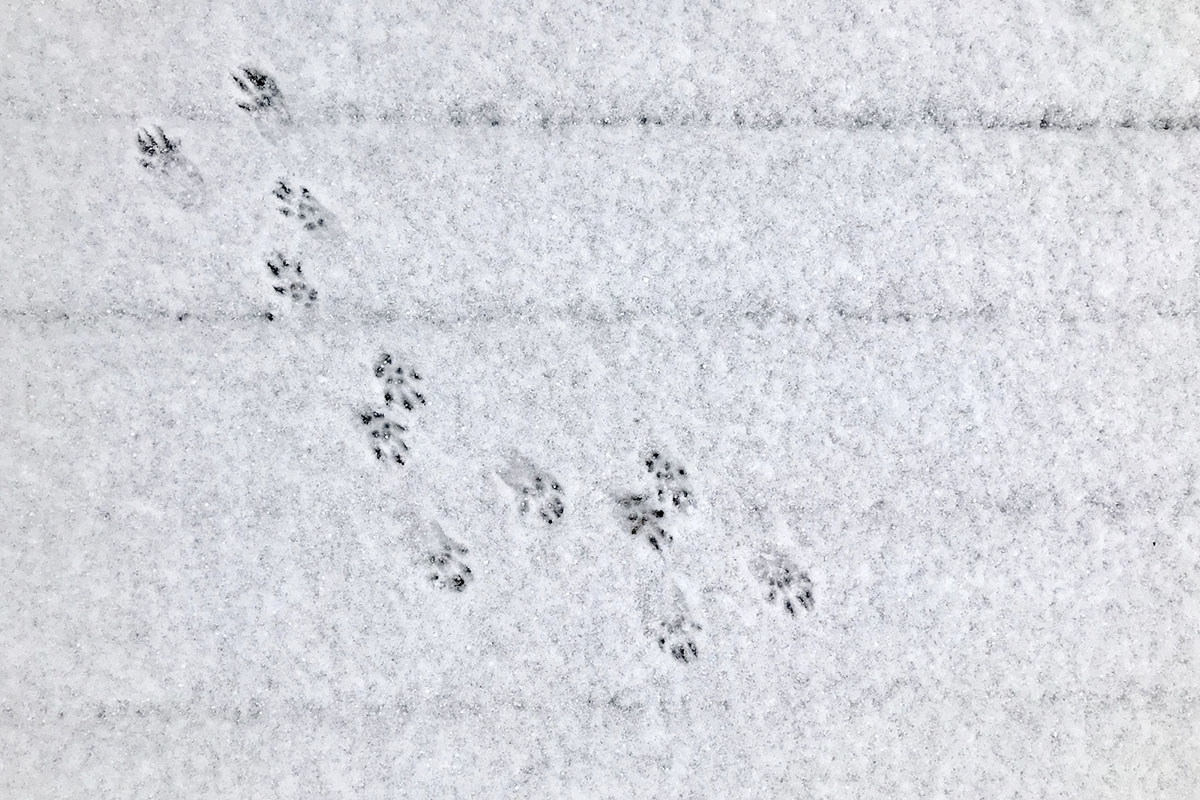
Wolf



